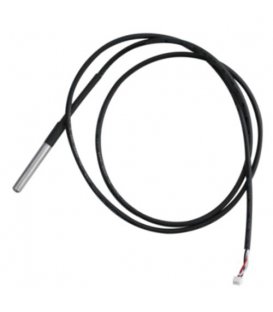

Political reliability, cost effectivity, and public acceptibility can be counted as the biggest advantages of renewable energy sources.Among renewable energy sources solar energy is the most important one since the capacity of solar energy is far more than 100,000 TW. Reducing the depence on fossil fuels and the use of renewable energy sources have been foreseen as two viable strategies to overcome this problem. Recently, the source for the energy of the world is highly dependent on the fossil fuels, which leads to a climate change due to the increased amount of carbon emissions to the atmosphere. The energy need is increasing in proportional to the increase in the world population. Global energy problem is one of the most serious among the top 10 problems of the humanity for the next 100 years. © 2018 Institute of Advanced Engineering and Science. As a result of solar tracking system, solar panel will generate more power, voltage, current value and higher efficiency. A small prototype of horizontal single axis solar tracking system will be constructed to implement the design methodology presented here. The efficiency of the system has been tested and compared with the static solar panel on several time intervals. A servo motor is used to rotate the solar panel to the maximum light source sensing by the light dependent resistor (LDR) in order to increase the efficiency of the solar panel and generate the maximum energy. For the development of horizontal single axis solar tracking system, five light dependent resistors (LDR) has been used for sunlight detection and to capture the maximum light intensity. This project discusses on the development of horizontal single axis solar tracker using Arduino UNO which is cheaper, less complex and can still achieved the required efficiency. Fill factor and efficiency have an exponentially relationship to light intensity. Variations in light intensity can increase the fill factor and efficiency of solar cells. The using solar cell automatically driven can improve the accuracy and precision of current and voltage readings so the fill factor might be increased up to 10% while the efficiency of solar cells does not change. The result show that it has been successfully designed an automatic driver of a solar panel (99 × 69) mm2 with an Arduino Uno R3 microcontroller and a logger pro software as data acquisition software. Data acquisition of current and voltage is carried out with the help of DCP-BTA current and VP-BTA voltage probes that are connected to the mini labquest transducer and displayed to a computer through loggerpro software. In this study, polycrystalline solar cell type (99 × 69) mm2, the Philips 100W/220V light bulb at a distance of 18 cm and the driving machine is controlled through an Arduino Uno R3 microcontroller. The test results are then implemented to determine the fill factor and efficiency in variations in light intensity. Abstrak- The study about fill factor and efficiency solar cell have been done with an automatic drive machine that rotates the surface of the solar cell following the movement of the light source from 0° up to 90° compared without automatic drive.


 0 kommentar(er)
0 kommentar(er)
